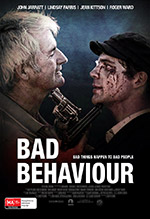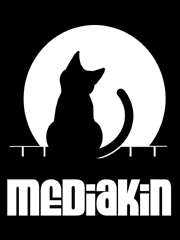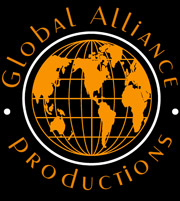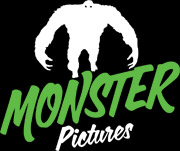All names, characters, images
and logos within the boundaries of this site are protected by copyright,
and other intellectual property laws. All rights in relation to
the products and creations identified within this website are owned
by Anthony Marriott (Arkhamhaus Images) or the party designated
as the owner of the rights. This site is© Anthony Marriott. All Rights Reserved. There is no system of registration for copyright protection in Australia. Copyright protection does not depend upon publication, a copyright notice, or any other procedure. Copyright protection is free and automatic. While the copyright notice is not required for protection in Australia and in most other countries, it does notify people that the work is protected and identifies the person claiming the rights. In Australia, copyright law is contained in the Copyright Act 1968 (Cth) and decisions of courts.
As a result of international treaties such as the Berne Convention, most foreign copyright owners
are protected in Australia, and Australian copyright owners are protected in most other countries.
|
|
"It doesn't do any good to say, 'This is what it means.' When you are spoon fed a film, people instantly know what it is. I like films that leave room to dream." - David Lynch |
|











Client : MEDiAKiN / Sterling Cinema Pty Ltd / Global Alliance Productions / Caldwell Entertainment

Brief : Read script, on-set observations.
Medium : Digital : One of several Original presentation visuals Created in Adobe Photoshop 2010 a.d
Design Notes : Poster was Designed in collaboration with Alex Allansen. Poster design involved photo re-touching, background cleaning & cloning, sharpening, textures added for effect. Title art required cleaning and conversion to Vector. Actors featured in this poster are Lindsay Farris as Peterson and Jean-Marc Manning as Pierre. Here's an External Link relating to the January 17 2013 Australian DVD Release.
In pre-blockbuster days, the horror shelf in the local video store was a special place—a vast undiscovered country of illicit sights. Today, as most people order their dvds from Amazon based on movies they’ve already seen or heard of, or worse yet, they `flix everything they watch, DVD cover art is a pretty sanitized business. Actors you recognize, a scene from the film, the promo poster you’ve seen a thousand times. Mid-80's VHS cover art was different, especially in the horror aisle. Intense color and extreme graphics were the only ways to give your film a chance to be seen, especially in an era when many horror films were independently produced or released direct to video. VHS covers could be downright terrifying. A trip down the horror aisle at the video store could often be an act of bravery for my 13-year-old self, and, unfortunately, most often a much richer artistic experience than viewing the films inside those nightmarish Technicolor cases.
One-sheet refers to the standard north american sized 70 x 100cm (27 inch x 41 inch) movie poster, what is misleading is the one-sheet size isn’t necessarily consistent or standard, and can vary by several inches/centimeters. This is especially true of some borderless full-bleed posters, which may be 66.04 x 101.6 cm (26 x 40inch) or smaller. The sizing can also change between film studios, with each film company in-house ad production group following it’s own sizing and printing standards.
Lobby Card (LC): 35.56 x 27.94 cm (14 x 11 inches), printed on light card stock. Originally made in sets of eight per movie for display in theatre lobbies. Most sets have one title card featuring title and production credits plus related artwork. The other seven cards are coloured photographic scenes. Lobby cards are no longer used in the US, but are still sometimes produced for the overseas market. Finding complete lobby card sets is not easy, as most desirable title sets have been broken up. Often, sets will have what are termed 'dead' cards - cards that do not feature main actors or scenes.
There are also Jumbo Lobby Cards (JLC) which were made before 1940 and are usually found only as single cards. JLC come in 14 inch x 17 inch size.
Window Card (WC) : 35.56 x 55.88 cm (14 x 22 inches), are printed on card stock and come flat. These smaller posters were usually used for off-site advertising e.g. in windows of local stores in exchange of movie passes. Top four inches were left blank by the printer for the local exhibitor to fill in. For this reason, WC posters are sometimes found with the top 4 inches trimmed off.
There is also - though not so common among poster sizes - a Jumbo Window Card (JWC), measuring 55.88 x 71.12 cm (22 x 28 inches). A Mini Window Card (MWC) is also available, measuring 11 x 14 inches; these are also printed on cardboard.
Insert : 14 x 36 inches, usually printed on card stock and come rolled though many pre-1960 were distributed folded. Later ones were printed on thinner stock.
1/2 sheet : This is probably the second most popular among movie poster sizes. It measures 71.12 x 55.88 cm (28 x 22 inches), is printed on card stock, and come rolled. Image is usually different from that used on 1-sheet; instead, it is often the same as the first, or title card, in the lobby card set.
Lenticular : These come in approximately the same poster size as the one-sheet (approx. 27 x 41 inches); lenticular posters are printed between composite sheets of plastic and lit from behind to create a 3D/holographic effect.
76.2 cm x 1.016 m (30 x 40 inches) Heavy Stock Posters : Printed on heavier card stock. artwork invariably the same as 1-sheet but may be silk screened instead of lithographed. These posters come rolled and do not exist for many film titles.
1.016 x1.524 m (40 x 60 inches) : Printed on heavier card stock, otherwise similar to the smaller 30 x 40 heavy stock posters though the image may differ, and again may have been silk screened. Designed for use outside the theatre, on an easel, exposed to the elements. This is sometimes, incorrectly, referred to as a 2 sheet.
Banner : These movie posters measure approximately 2.0574m x 60.96 cm (81 x 24 inches). Older ones were printed on bookbinder's cloth or light card stock. Modern ones are vinyl or light card stock or paper, while banner poster sizes are highly variable.
3-Sheet Movie posters : 1.0414 x 2.0574 m (41 x 81 inches), printed on paper stock on two and rarely, three separate sheets using lower stock paper. Often pasted onto wall outside of theatre. From the 1970s on, three-sheets were sometimes printed in one piece and issued as 'international' versions.
6-Sheet Movie Posters : 2.0574 x 2.0574 metres (81 x 81 inches), printed on paper stock, usually in four sections, and come folded; for use in larger U.S. theatre lobbies and movie palaces, or on the outside of the building. This poster size is not so popular, and therefore rare to find.
Billboard or 24-sheet Movie Posters : Approximately 2.6924 x 5.9436 metres (106 x 234 inches) but may come in various poster sizes, usually in 12 sections, for use on roadside billboards.